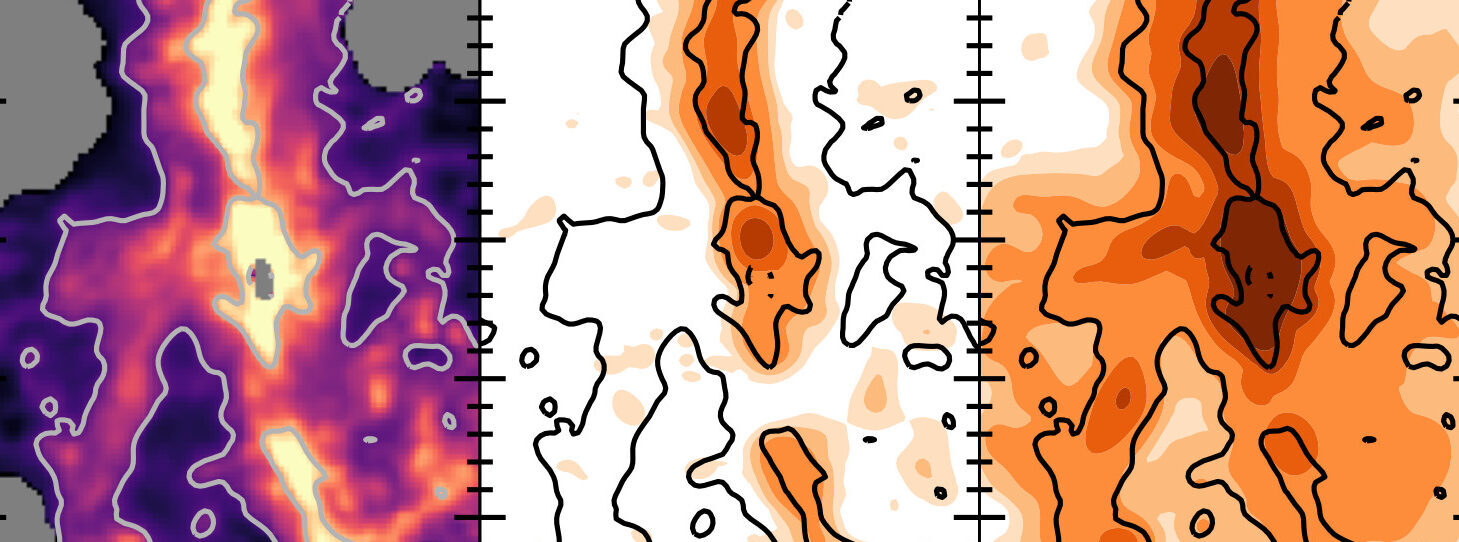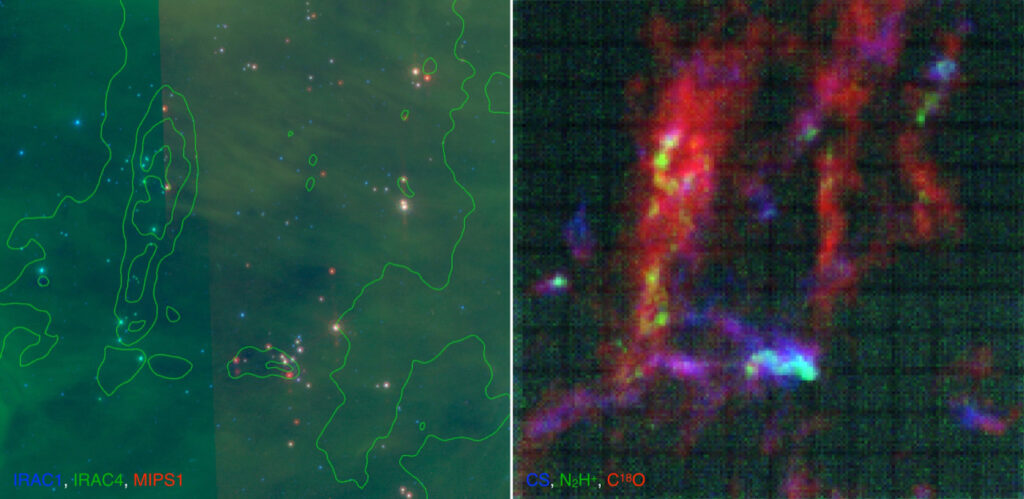
The LEGO Survey of Molecular Clouds in the Milky Way
Star formation is the key process that converts cosmic baryons—a type of subatomic particle—into the stars and planets that populate galaxies. It is thus of fundamental importance for our understanding of the evolution of stars, planets, and galaxies over cosmic time. Unfortunately it is difficult to study the physics of the star formation process outside of the Milky Way, as even telescopes like ALMA cannot spatially resolve star-forming sites in other galaxies. Astronomy must therefore use indirect methods to unravel the physical processes active on spatial scales smaller than those resolved by telescopes.
The Line Emission as a Tool for Galaxy Observations (LEGO) project delivers a great leap forward in our ability to devise and test such indirect methods. LEGO uses the IRAM 30m-telescope in Spain to image 25 star-forming sites in the Milky Way in a continuous frequency range of 85–115 GHz. These observations allow to measure the distributions of molecules like CO, CS, and HCN in fields of up to 30 x 30 arcmin2 size. The resulting data generate the most comprehensive multi-molecule imaging atlas of star formation in the Milky Way that currently exist. The data on the many detected molecules can be used, for example, to predict the molecular line intensities and intensity ratios a telescope would see if a LEGO target region were located in a nearby galaxy. These predictions allow us to determine whether star formation in galaxies differs substantially from the well-understood process active in the Milky Way.

The LEGO pilot paper showed, for example, that radiation from the HCN (1-0) transition is tied to gas at densities of order 1,000 cm–3. This is remarkable, because previous research on galaxies had assumed that the HCN (1-0) line can be used to probe gas at densities well above 10,000 cm–3. As a consequence, the LEGO pilot paper suggested that a fundamental revision or reinterpretation of the so-called Gao & Solomon relation in extragalactic star formation is needed. Ongoing LEGO projects refine this point.